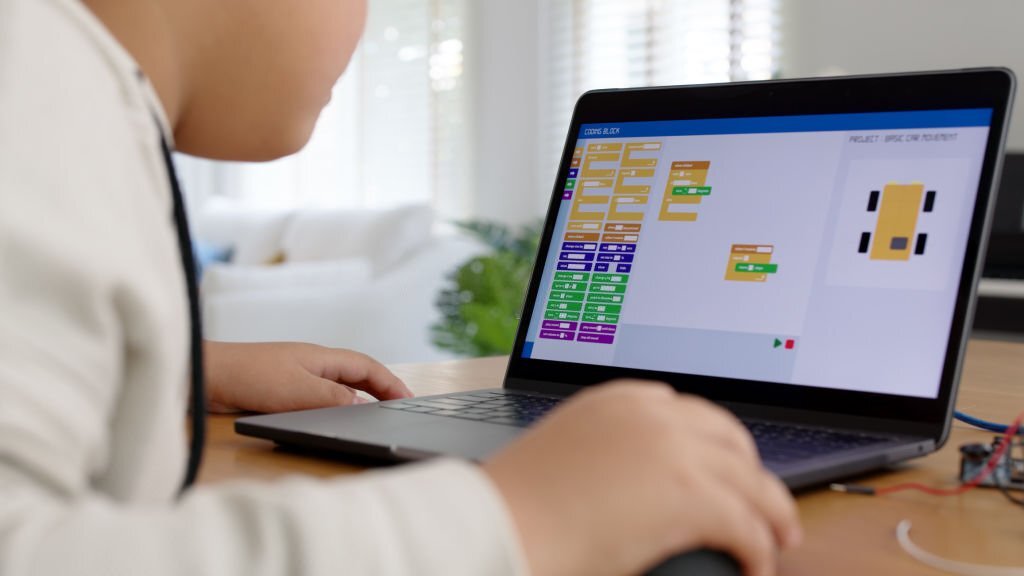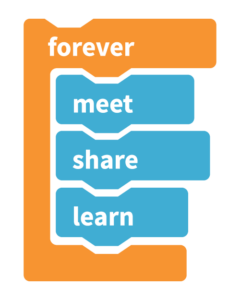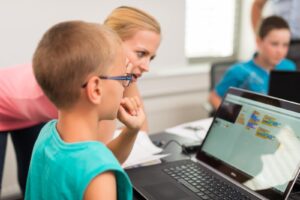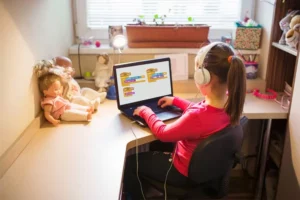Book a FREE Trial
See why Code Galaxy is the #1 online coding
school of choice for students & parents.

In a world where technology continues to evolve at a rapid pace, equipping children with the tools and knowledge to understand and contribute to this evolution is increasingly important. One such skill, often overlooked in traditional education, is coding. Among various ways to introduce coding to children, block coding for kids stands out as one of the most effective. But what exactly is block coding, and why is it a method of choice for teaching coding to kids? This article will unravel the answers to these questions and more.
Block coding, alternatively known as block-based or visual coding, is a form of programming language specifically engineered with children in mind. In a departure from traditional text-based coding languages, which often require precise syntax and memorization of commands, block coding presents a much more accessible and visually intuitive alternative.

At the heart of block coding is the concept of using ‘blocks’ to represent individual chunks of coding script. These blocks are typically graphical, each encapsulating a particular command or action, much like a pre-written line of code. The simplicity of this system lies in its drag-and-drop functionality. Children can select the blocks they need, and drag them into a working space where they can arrange and stack them in various orders to create a functioning piece of software.
The possibilities of what can be created using block coding are extensive. Depending on the complexity of the blocks and the platform used, children can create a wide range of digital projects. They might start with simple tasks like animating characters or designing scenes. As they become more proficient, they can venture into more complex projects such as building their own games, designing interactive websites, or even creating simple applications.
The beauty of block coding is that it encourages experimentation and creativity. It’s not just about learning the mechanics of coding but also about nurturing problem-solving skills, logical thinking, and creativity. Children are given the opportunity to see their ideas come to life in a digital form, which can be both exciting and highly satisfying.
In a nutshell, block coding provides a stepping stone for children into the world of coding. It breaks down the perceived complexity of coding into manageable, understandable parts and provides a foundation upon which further coding skills can be built.
One of the primary benefits of block coding is its visual nature, which makes it engaging and accessible for children. The immediate visual feedback they get from block coding allows them to see the cause and effect of their actions instantly, enhancing their understanding of coding logic.
Block coding significantly lowers the entry barrier to the world of coding. Traditional text-based coding can be intimidating for beginners, especially children, due to the complexity of syntax. With block coding, there are no syntax errors to worry about, and no typing skills are required. This allows children as young as five to start experimenting with creating their own digital content.
Finally, block coding helps cultivate problem-solving skills. As kids try to achieve certain actions with their blocks of code, they’re inherently practicing logical thinking and troubleshooting. They learn to break down complex tasks into smaller, manageable parts – a crucial skill not just in coding, but in problem-solving in general.
While block coding is excellent for beginners, it can sometimes oversimplify coding concepts. Real-world coding often requires a detailed understanding of syntax and semantics, something which block coding does not heavily emphasize.
Another potential disadvantage is the transition from block coding to text-based coding. Because block coding eliminates the need to understand syntax, making the leap to text-based coding can be challenging for some children. The level of complexity increases significantly, and this transition should be managed carefully to ensure that children do not get overwhelmed.

Scratch is a free block coding platform developed by the MIT Media Lab. It’s designed specifically for children aged 8-16 to help them create interactive stories, games, and animations. With Scratch, kids can learn fundamental coding concepts while engaging with a vibrant online community, sharing projects, and learning from peers.
Blockly, developed by Google, is another free web-based, block coding platform. It is designed to make coding accessible for children and beginners by representing coding concepts as interlocking blocks. Blockly can be used to learn multiple programming languages, including JavaScript, Python, and PHP.
See why Code Galaxy is the #1 online coding
school of choice for students & parents.
Tynker is a comprehensive platform that offers self-paced online courses for children to learn coding at home. While Tynker supports block coding, it also allows kids to transition to text-based coding when they’re ready.
All three platforms – Scratch, Blockly, and Tynker, offer robust block coding experiences. Scratch is great for kids interested in creative projects, Blockly for those who want to experience various coding languages, and Tynker for a more structured learning path. It’s recommended to explore each platform and choose one that best fits the child’s interests and learning style.
Recommended Reading: https://blog.thecodegalaxy.com/coding-websites-for-kids/
Hopscotch, an iOS app, allows kids to learn coding through a block-based system while making their own games and animations. Its intuitive design encourages creativity while teaching fundamental coding concepts.
Kodable, available on both iOS and Android, introduces kids to coding with simple puzzles. It starts with block coding and gradually transitions to text-based JavaScript, preparing kids for more complex coding environments.
CodeSpark Academy, also available on iOS and Android, uses block coding to introduce children as young as five to coding. Through engaging games and puzzles, kids learn problem-solving and critical thinking skills, along with basic coding concepts.
Minecraft: Education Edition offers a unique, immersive platform for kids to learn coding. By utilizing block-based coding, kids can modify the game world, enhancing their logical thinking and problem-solving skills.
Roblox is a popular gaming platform where kids can create and share their own games. With Roblox Studio’s block coding, young developers can learn programming basics while designing their unique virtual experiences.
CodeCombat is an online, multiplayer game that teaches kids coding. Players control their characters using block coding to navigate through different levels, learning coding concepts along the way. The game makes coding an adventurous and exciting experience.

Block coding serves as a solid foundation for kids stepping into the world of programming. Eager to set your child on this exciting journey? Code Galaxy’s elementary school coding program starts with block-based programming languages, including Scratch—one of the most renowned platforms of its kind. Our live online classes, guided by seasoned instructors, allow students to learn coding fundamentals by creating fun animations and games.
Once students grasp these fundamentals, we introduce them to text-based programming languages such as Python, HTML, CSS, and JavaScript. In no time, they will be creating their own interactive websites and apps. It’s fascinating to see how their coding journey, initiated with block coding, leads them to accomplish such complex tasks! Join us at Code Galaxy and let your child’s coding adventure begin.
See why Code Galaxy is the #1 online coding
school of choice for students & parents.